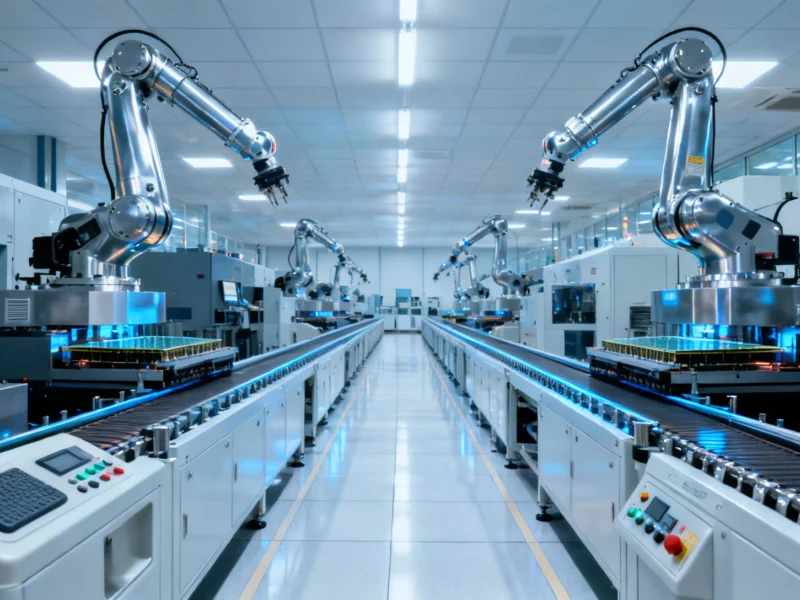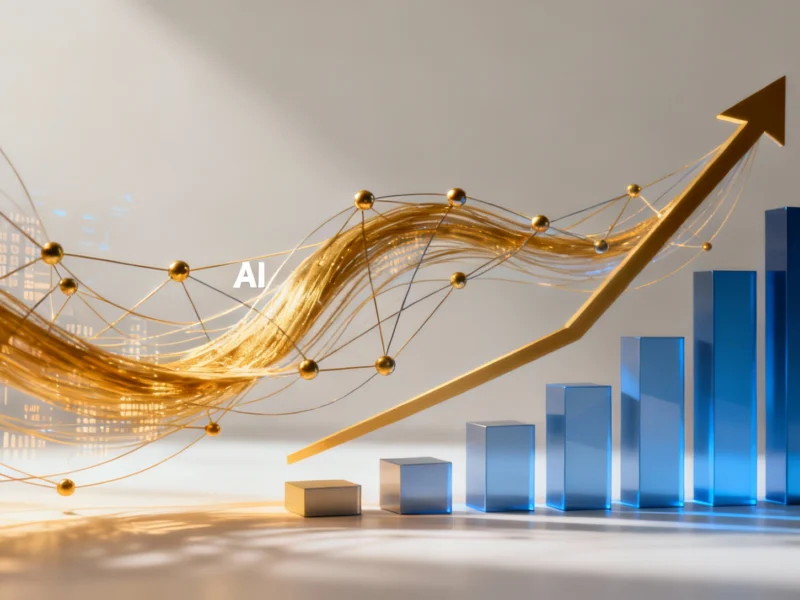AI Economic Transformation Still in Early Innings
Financial markets may be expressing concerns about an artificial intelligence bubble, but analysts at Goldman Sachs suggest the current boom represents merely the opening act of a much larger economic transformation. According to their recent analysis, the scale of current investment remains relatively small when measured against the technology’s potential economic payoff.
Substantial Economic Justification for Continued Investment
The report states that “the enormous economic value promised by generative AI justifies the current investment in AI infrastructure,” with analysts suggesting investment levels appear sustainable as long as companies anticipate outsized long-term returns. Sources indicate this assessment stems from two key observations: AI applications are already delivering measurable productivity gains in deployment areas, and unlocking these benefits requires massive computing power infrastructure.
Trillion-Dollar Economic Impact Projections
According to the analysis, Goldman Sachs estimates that widespread AI adoption could potentially add approximately $20 trillion to the US economy, with about $8 trillion of that flowing to companies as capital income. The report specifically notes that “generative AI still appears set to deliver a rapid acceleration in task automation that will drive labor cost savings and boost productivity,” with baseline estimates suggesting a 15% gross uplift to economy-wide US labor productivity following full adoption over a 10-year period.
Historical Context Shows Modest Current Investment Levels
Despite record-breaking expenditures on chips, servers, and data centers, analysts suggest AI investment remains modest by historical technology revolution standards. The firm estimates that AI-related investment in the US currently sits below 1% of GDP, significantly lower than the 2% to 5% of GDP reached during earlier technology booms including railroad expansion, 1920s electrification, and the late 1990s dot-com era.
Analysts indicate they remain “less concerned about the dollar amount of AI capex,” noting that approximately $300 billion being spent annually in 2025 represents an appropriate scale given the technology’s long-term potential returns. This assessment comes amid broader economic discussions, including analyses of global energy investment patterns and climate-related economic impacts.
First-Mover Advantages Uncertain in Rapidly Evolving Landscape
The report acknowledges “valid concerns” about whether current AI infrastructure leaders will ultimately capture the economic rewards, particularly given hardware’s rapid depreciation. According to analysts, history suggests that being first doesn’t always guarantee long-term success, citing examples from railroad and telecommunications infrastructure buildouts where later entrants often captured better returns by acquiring assets cheaply after initial overbuilding.
“The current AI market structure provides little clarity into whether today’s AI leaders will be long-run AI winners,” the analysts wrote, noting that first-mover advantages tend to be stronger when complementary assets like semiconductors are scarce and production is vertically integrated. However, these advantages may weaken during periods of rapid technological change like the current environment.
Investment Cycle Timing and Future Outlook
Analysts suggest it remains difficult to pinpoint when the motivation for continued AI investment might fade, since early productivity gains and steady improvements in model performance continue to encourage spending. The report states that “investment should eventually moderate as the AI investment cycle moves beyond the build phase and declining hardware costs dominate,” but the current technological backdrop still appears supportive for continued investment.
This analysis emerges alongside other significant economic developments, including environmental economic impacts, infrastructure investment debates, and financial sector developments. The assessment also aligns with recent arguments from strategists at multiple financial institutions that AI stock valuations aren’t as stretched as critics claim when accounting for earnings growth, cash flow, and profit margins.
As technological integration continues across sectors, including projects like the Ipswich digital infrastructure initiative, the Goldman Sachs analysis presents a comprehensive perspective on AI’s economic trajectory, suggesting the current investment phase represents foundational building rather than speculative excess.
This article aggregates information from publicly available sources. All trademarks and copyrights belong to their respective owners.



